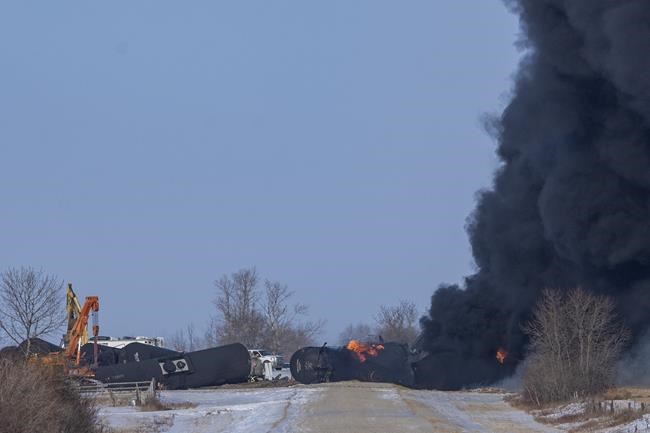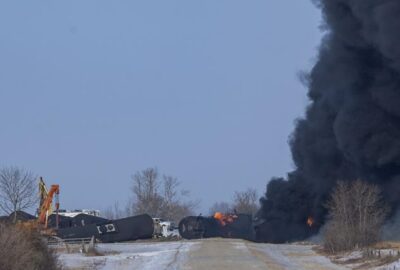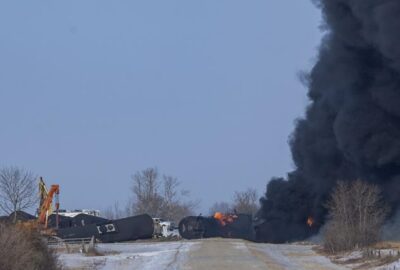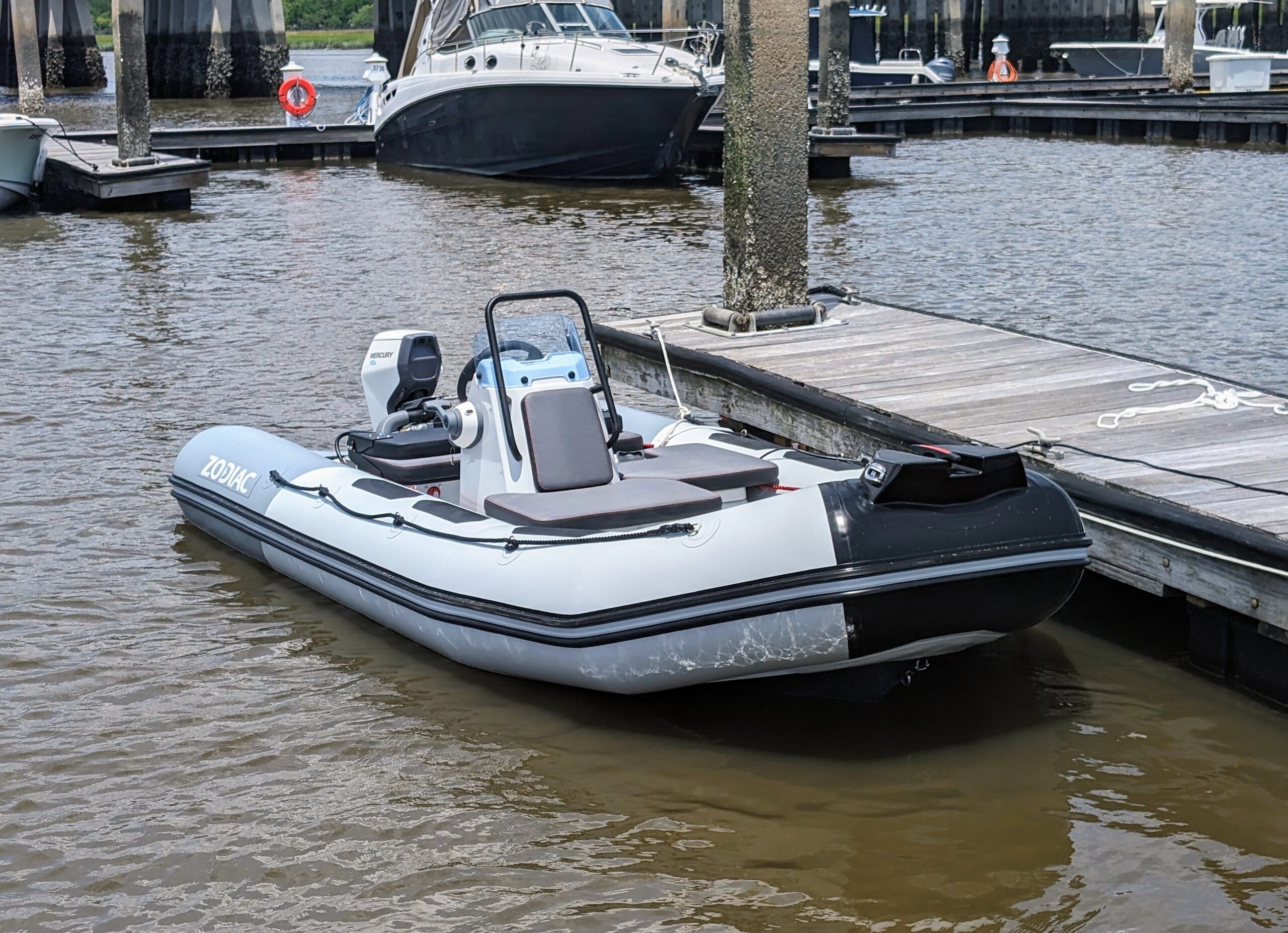
GUERNSEY, Sask. — A Transportation Safety Board of Canada report says an undetected broken rail led to a fiery train derailment in Saskatchewan in 2019 that spilled about 1.77 million litres of oil.
The Canadian Pacific Railway train, which had 101 cars mostly filled with oil, had been loaded in Alberta and was headed to Oklahoma.
Just after midnight, the train was travelling east near Guernsey, roughly 115 kilometres southeast of Saskatoon, when the crew noticed a gap in the rail. Automatic emergency brakes were applied.
Shortly after, the crew saw a large explosion behind them, and 33 cars derailed.
No one was hurt, but 20 tank cars breached and released oil. Due to the way the ground sits at the site, oil pooled under the flaming cars and burned for nearly 24 hours.
“The track under the train was destroyed,” the report said, adding that fire temperatures were more than 1,340 C, the minimum melting temperature of carbon steel.
“All recovered rail pieces were examined on site, but rail from the suspected point of the derailment was not located.”
The report said the train was handled according to regulatory and company requirements and was within the speed limits allowed. Video from the train showed the broken rail right before the crash.
The rail had likely failed under a previous locomotive, the report said, and the train’s speed of more than 70 km/h contributed to the large number of cars that derailed and broke, spilling the oil.
A few months later, there was a second serious train derailment near Guernsey. It spilled about 1.2 million litres of oil and prompted an evacuation of the small community for more than a day.
Following the two derailments, the Transportation Safety Board advised Transport Canada that there needed to be improved safety standards for track infrastructure.
In response, the federal government ordered lower speed limits for all trains carrying large amounts of dangerous goods and implemented new rail safety measures.
The safety board report noted that rail in the area of the Saskatchewan derailments was older, manufactured between the 1960s and 1980s.
Rail traffic on the route had also been increasing in the years prior. Between 2015 and 2019, the traffic increased by 60 per cent and transportation of crude oil increased by more than 66,000 car loads.
Canadian Pacific had met regulatory requirements, the report said, but inspections earlier in 2019 found defects that needed immediate attention and the rail needed additional maintenance.
“If company risk assessments do not adequately consider increases in traffic tonnage, the use of heavier rail cars, and the potential for more rapidly degrading track structure, regular track maintenance activities may no longer be sufficient to maintain track to the required standards, increasing the risk of track infrastructure failures that lead to rail accidents,” the report said.
Canadian Pacific has since brought in a system, which uses low-voltage signals through the rails, to detect issues with the track. There’s also been work on the track itself.
The report said there have been no derailments on the main track since that work was done.
This report by The Canadian Press was first published Oct. 5, 2023.
— By Kelly Geraldine Malone in Saskatoon
The Canadian Press
Share This:






